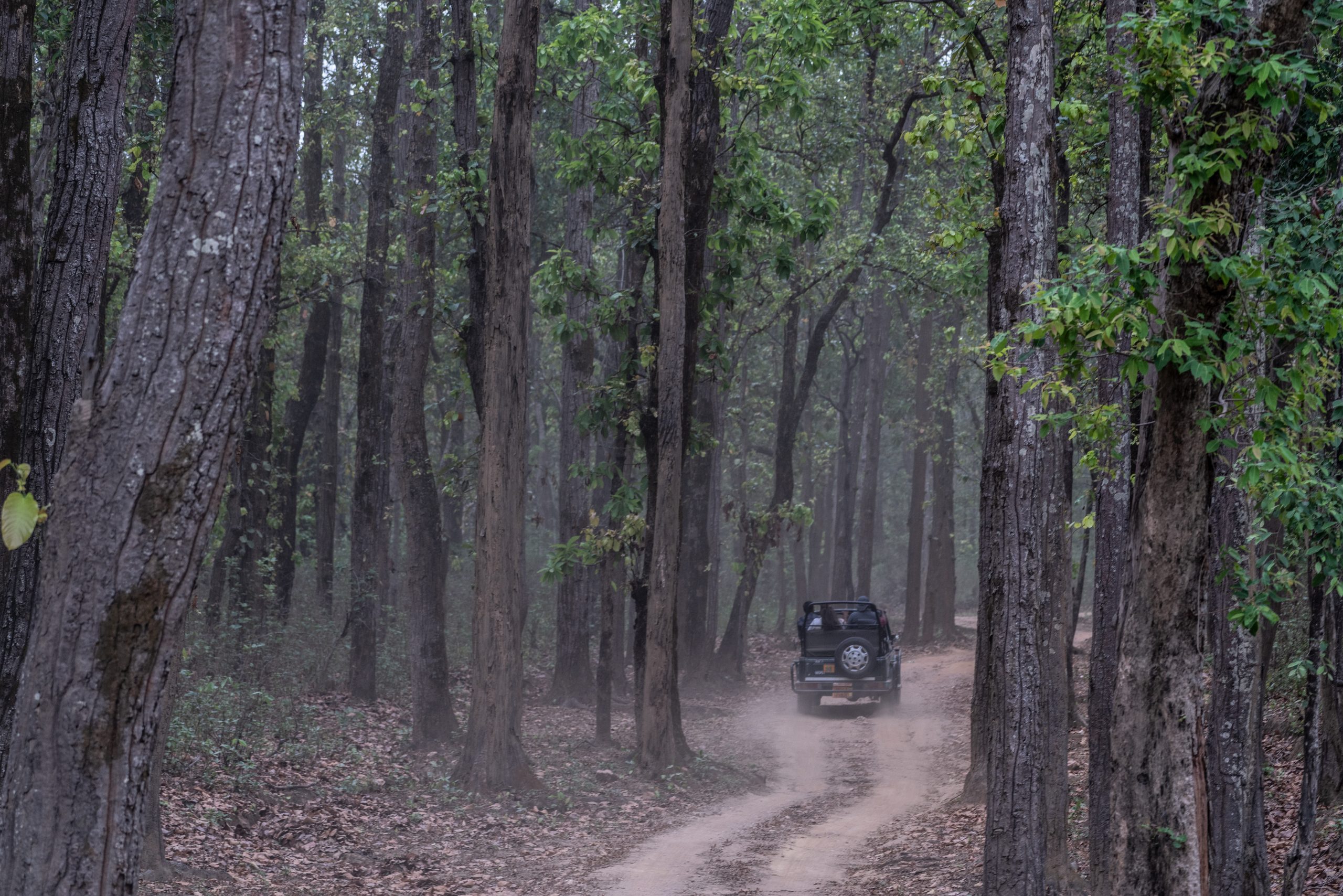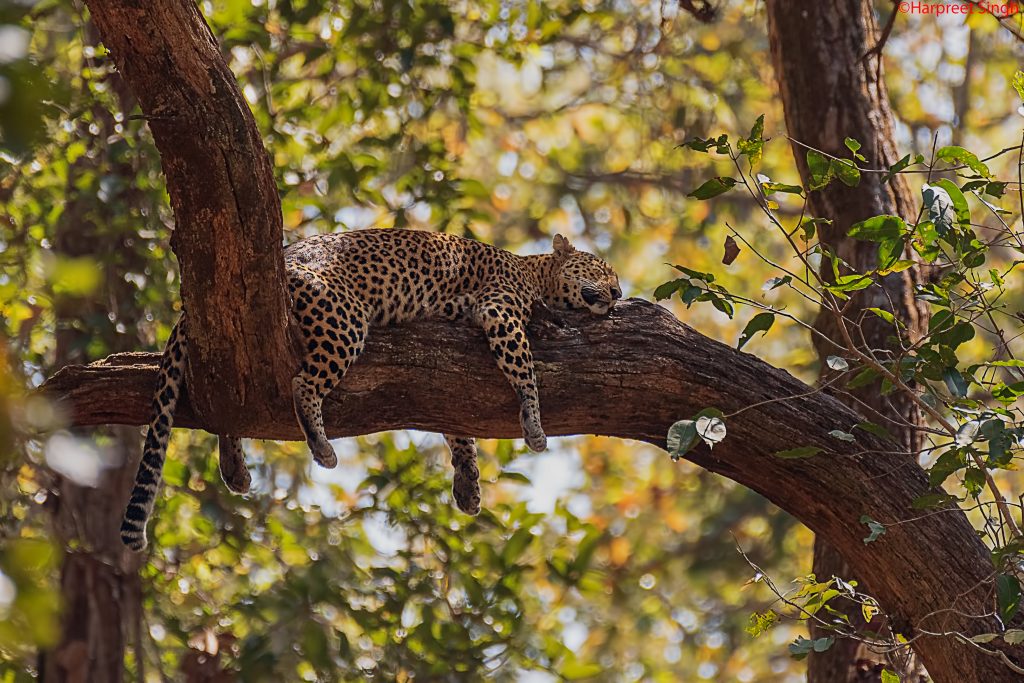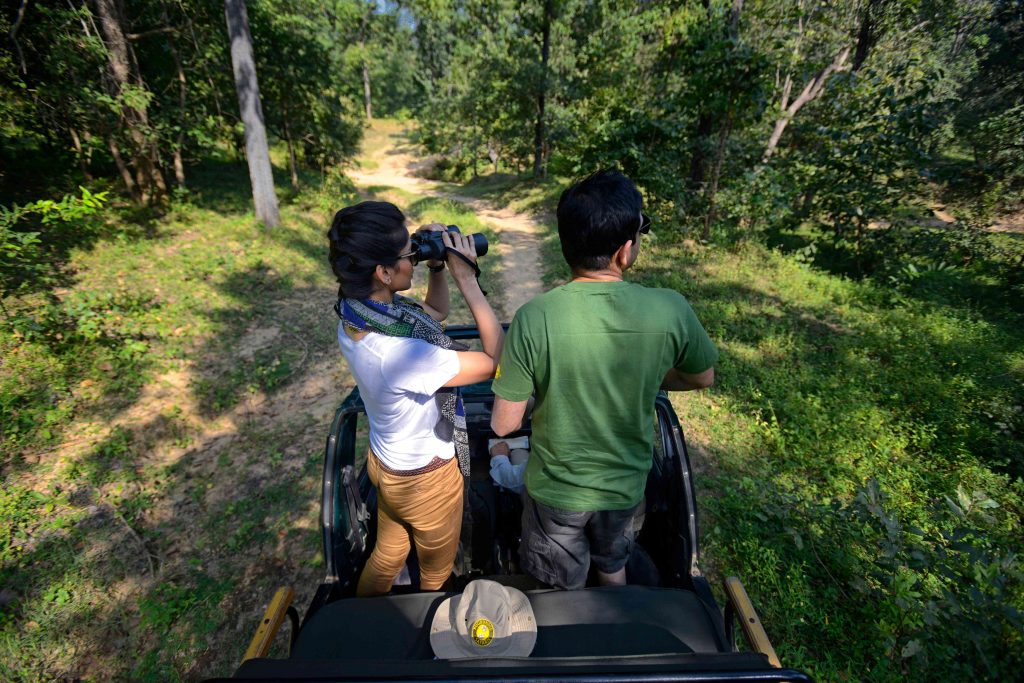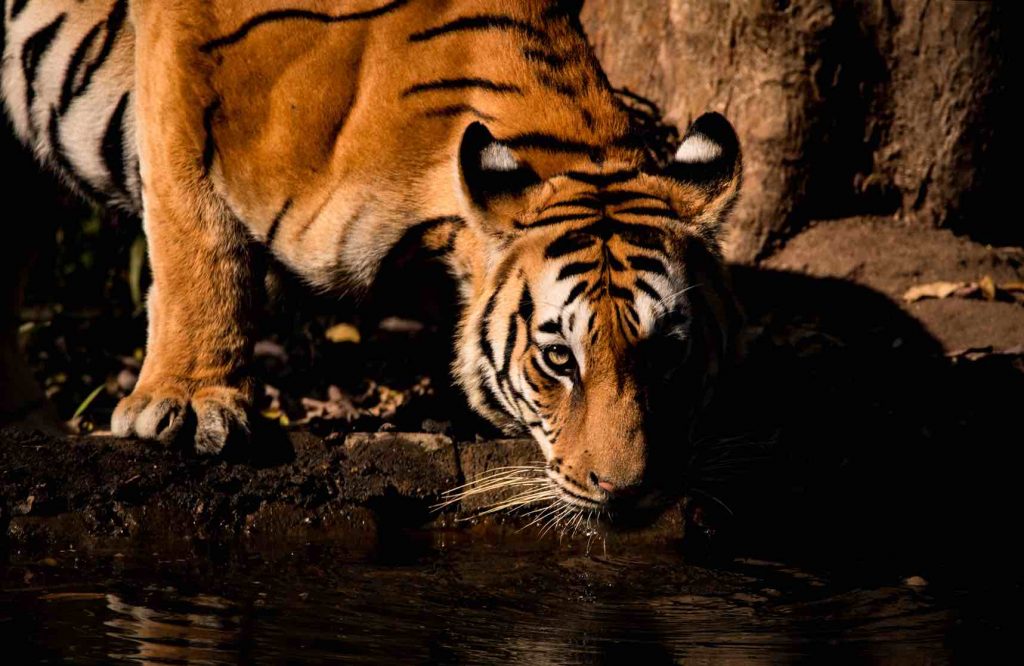Flora & Fauna of Kanha of Kanha National park
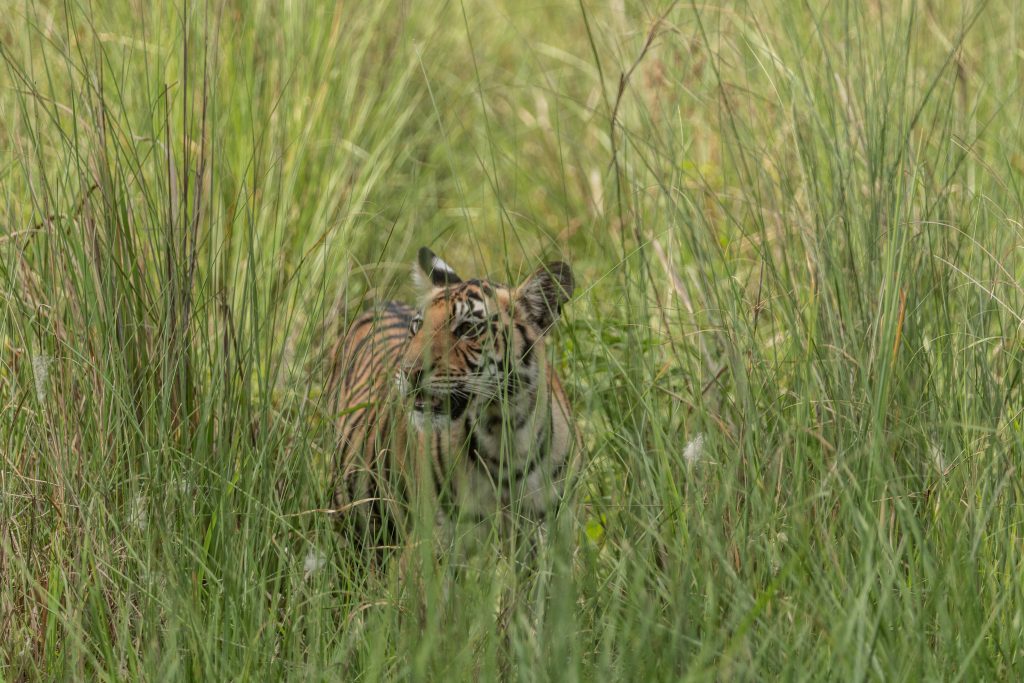
Tropical-wet deciduous peninsular forests of Kanha is actually a mosaic of sal (Shorea robusta), mix broadleaved trees and grasslands (mainly anthropogenic origin) vegetation.
An approximately 850 species belonging from different family, orders and genres constitutes the flora of Kanha. Most dominant family among all species is poaceae (grass).
Kanha also provides wonderful climatic conditions for survival of few of the charismatic species of Mushrooms ( fungi), Lichens( algea-fungi) , ferns ( pteridophyts), orchids, flowering and fruiting tree (angiosperms).
Out of them few are very rare and endemic to Kanha and India. Butea monosperma, Terminalia sp, Maduca longifolia, Hadinia cordifolia, Cassia fistula, Zizyphus, Syzyium, Mangifera, are most dominant tree species.
Mammals of Kanha
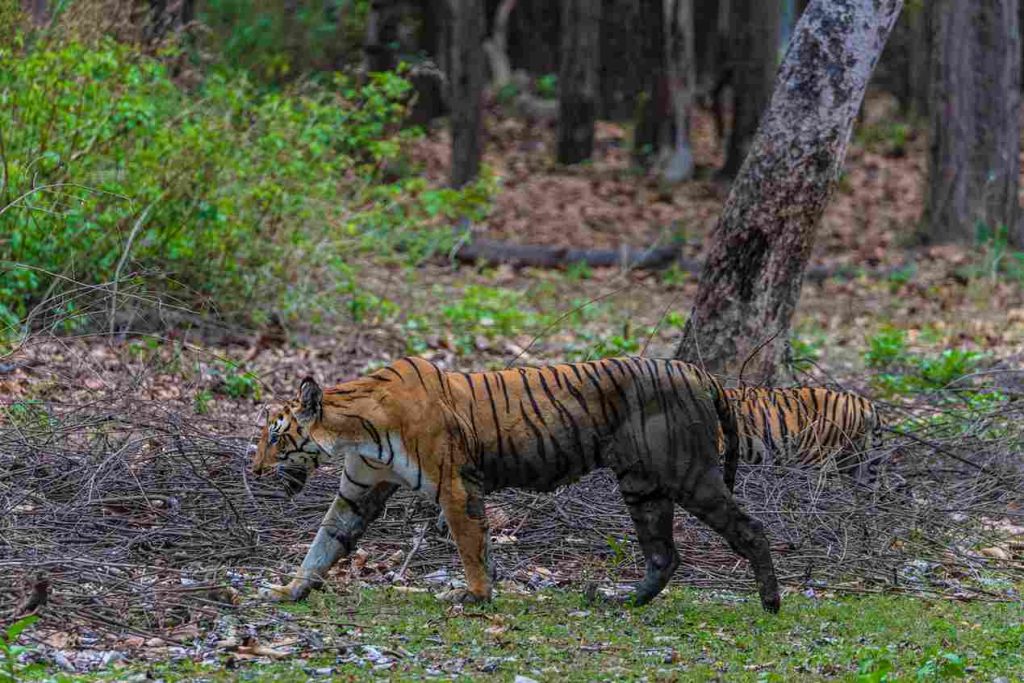
The most charismatic species of the Kanha ecosystem is Royal Bengal Tiger ( Panthera tigris). Tigers are the largest felid and are of global conservation concern. India’s national animal and umbrella species, being apex predators for the protected area.
Apart from Tigers, Kanha inhabits other feline species like common Leopard ( Panthera pardus), an elusive predator which is known to co-exist with tigers contributing to second in food chain (upside down) and distributed well across Indian subcontinent.
Also Know: Popular Gates of Kanha National Park
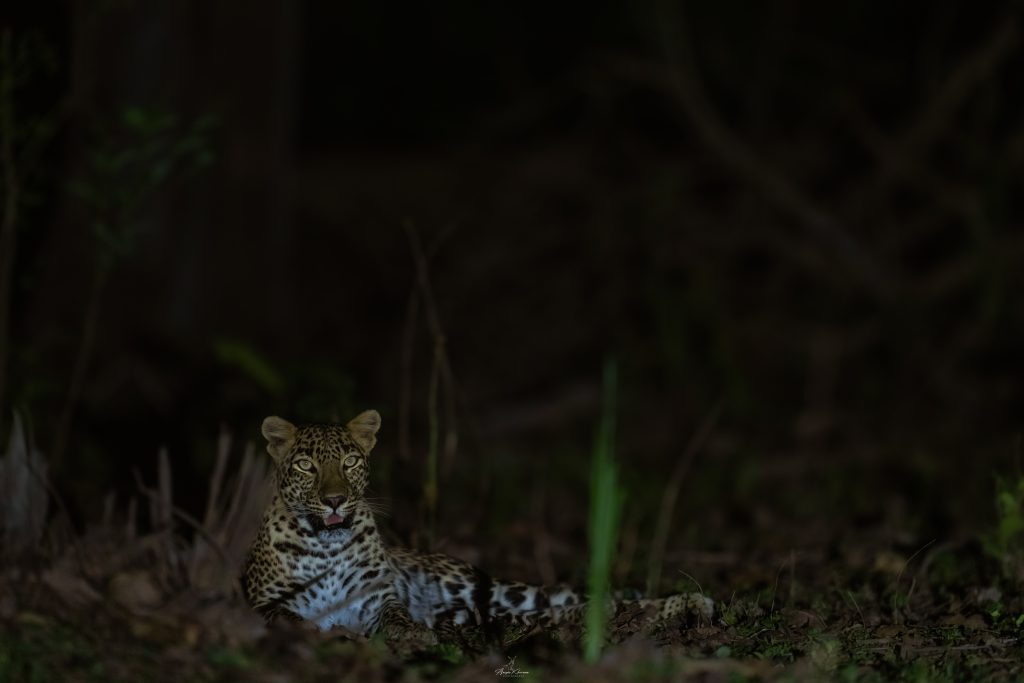
Strikingly Kanha is also a home to world smallest species of wild cat known as Rusty-Spotted cat ( Prionaillursus rubiginosus). This species share the habitat of Kanha with couple of other lesser known smaller wild cat spices.
Grey wolf (Canis lupus palipus), Wild dog ( Cuon alpines) , Golden Jackal (canis aureus) and Indian Fox ( vulpes bengalensis) are among the canid species .
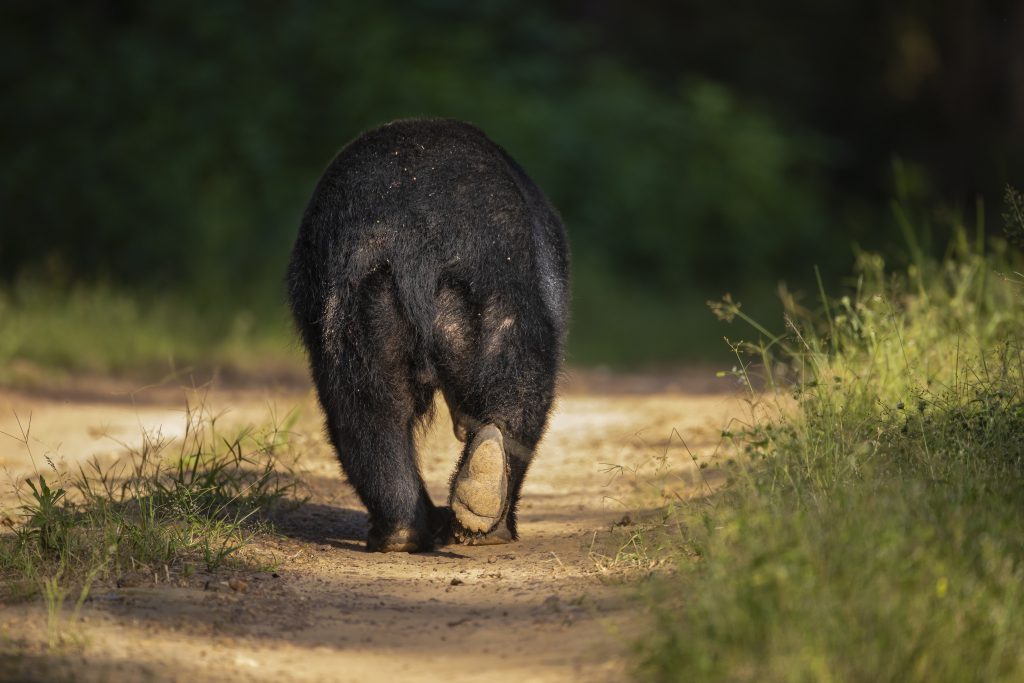
Sloth bear (Melursus ursinus), Striped Hyaena ( Hyaena hyaena) are other few contrasting species of interest when visiting Kanha. Lesser known mammalian species of Civet, Mongoose, Honey Badger, Smooth-Coated Otter also contribute in the list of carnivores of Tiger reserve.
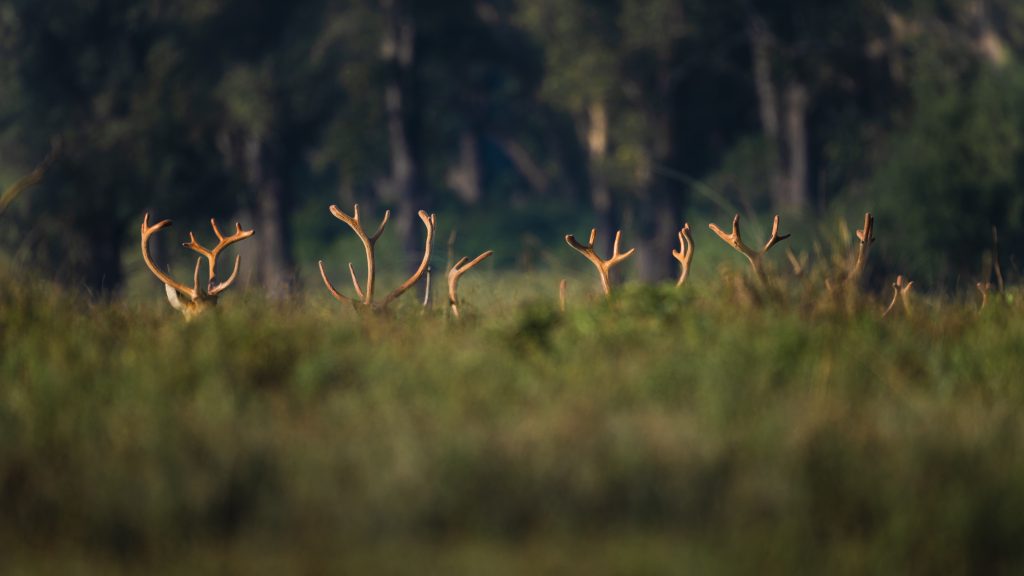
Bhoorsingh, mascot of Kanha Tiger reserve is actually an most endangered species of herbivores of the protected area. Commonly known as Hard Ground Barahsingha/ Swamp/Twelve Tinned Deer ( Rucervus duvaucelii branderi ) endemic to Kanha and hence it has also got designated as official state animal of Madhya Pradesh.
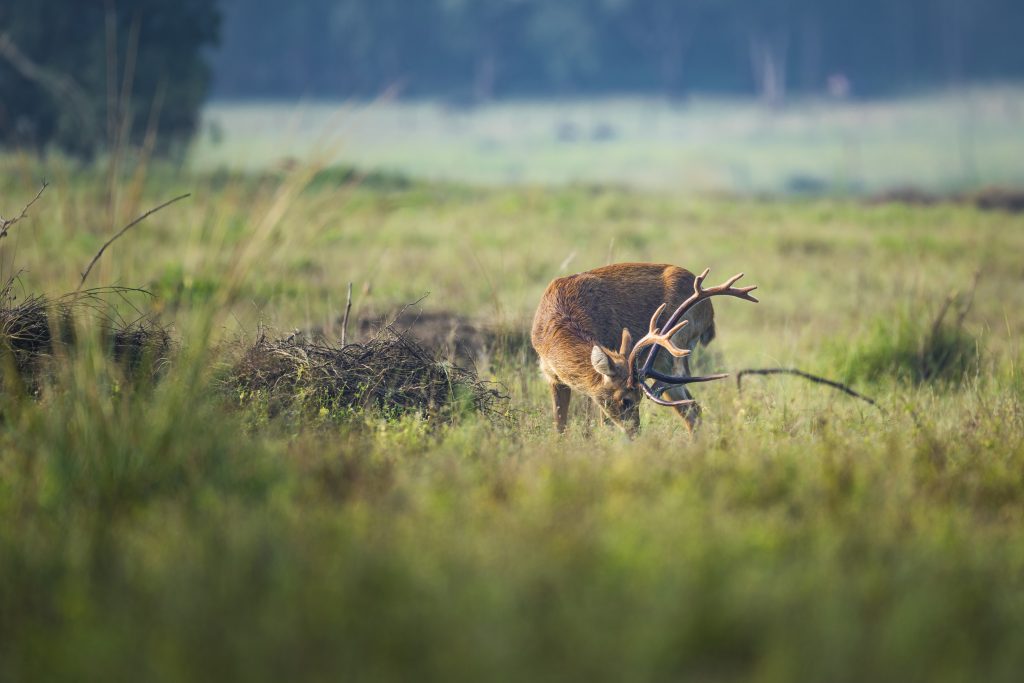
Swamp deer along with four other species of Deer (cervadae), Gaur ( bos gaurus), four species of Antelopes, Wild pigs ( Sus scrofa), Indian hare (Lepus nigriclolis), and two species of primates ( central Indian langurs and Rhesus macaque) contributes as species of prey. Indian Pangolin ( Manis
crassicaudata) an specialised ant eater, one of the most primitive mammalian lineage and rare species also sighted here.
Other than these species of bats, squirrels, rodents (shrews, voles and rats) are also frequently sighted here. Indian Crested Porcupine (Hystrix indica) is one of the largest rodent species of the protected area but exclusive nocturnal behaviour makes it one of the most rare mammalian species .
A total of 43 species of mammals are documented from the Kanha National Park from different family and orders. Most abundant family among large mammals is cervedeae (deers) and dominates the number of all animals found in the area.
Avifauna of Kanha
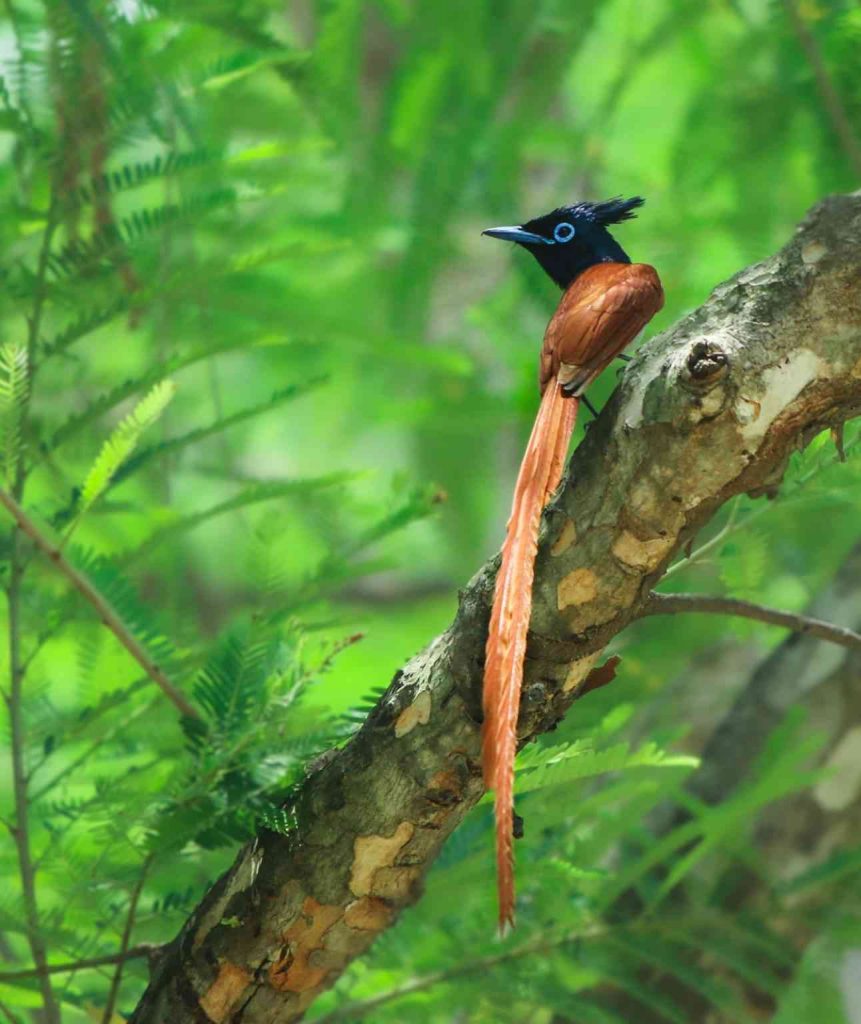
Starting with the state bird of Madhya Pradesh, Paradise Flycatcher, a more contrasting eye catching beauty with a long wavy tail makes it one of the most eligible species in sights of any birdwatcher, Racket-Tailed Drongo, the master of mimicry during mix foraging, Indian pitta one of the most awaited migratory species from southern India, Stork Bellied Kingfisher, fruit-eating birds like Malabar Pied Hornbill, Grey Hornbill, White- Browed Bulbul and Leafbirds.
Species of Owls, species of ground dwelling birds like Quails, Eurasian Hoppoe, Francolin, Spurfowl, Lapwing, Thicknee, scavengers like Red-Headed, Egyptian, colorful Minivets, masterclass insect eater like White-Rumped Shama, Black-Caped Monarch, Verditer Flycatcher, Canary Headed Grey, Bee-eaters, Streaked- Throated Woodpecker, Piculet, raptors like Grey- Headed Fish Eagle, Crested Hawk Eagle are among few of the 300 avian species documented (Kailash Chandra et al, 2005, ZSI).
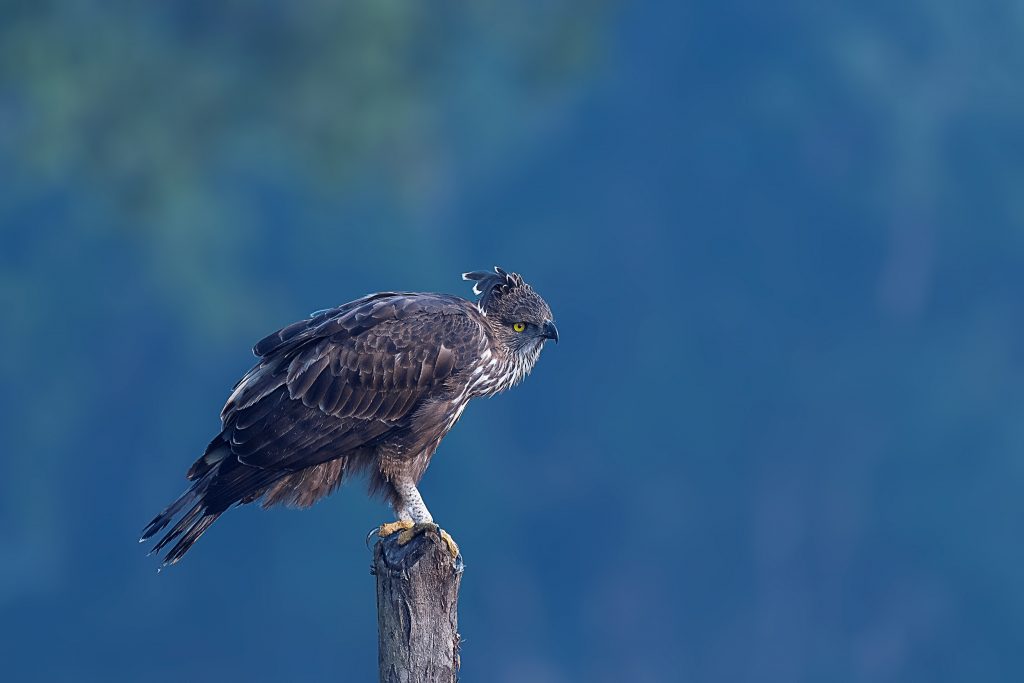
Other interesting species of Kanha are winter migratory ones mostly ducks from the family – arriving from northern part of India and other areas of northern hemisphere crossing mighty Himalaya.
One of the highest flying bird species during migration is Bar Headed Geese, Garganey and Ruddy Shelducks visits Kanha, during a very short period of year.
Diverse habitat, seasonal complexity, climatic factors and variety of food for many of the avian species regulated the species richness of the protected area. Waterfowls, storks and other wetland associated species further add on to thrilling bird watching experience.
Small sized species often remain unnoticed by amateur observers , but being cherished by experienced and advanced ones, like nuthatches, and species of warblers.

